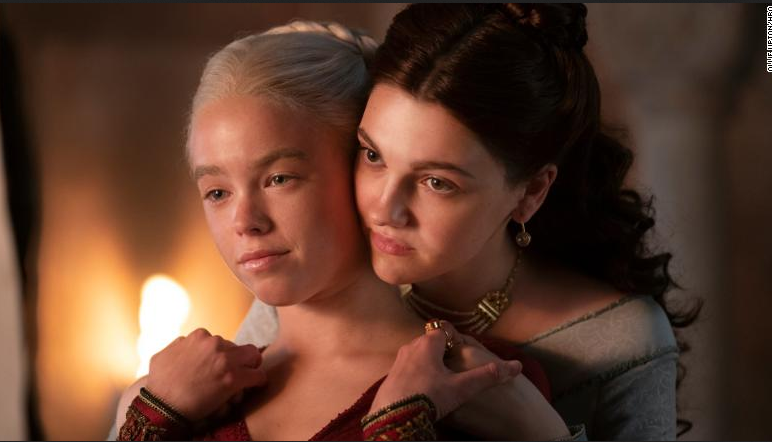In “Game of Thrones” Season 1 Episode 1 (“Winter is Coming“), the queen, Aemma Targaryen (Sian Brooke), is in the midst of a difficult labor. Her husband, King Viserys Targaryen (Paddy Considine), is desperate for a son in order to secure a male heir to the throne, in accordance with tradition in House of the Dragon. Told that the baby is a breach birth, the medical advisers say that the king faces a terrible choice, one that will require either losing the baby, or sacrificing the life of the mother in order to try saving it. After agonizing for a time, he chooses the latter; however, because of complications from childbirth and blood loss after an attempt at caesarean section fails, she dies before being able to give birth to her child.
Prior in the episode, Aemma alludes to ladies conceiving an offspring as “our front line,” and on account of the restricted apparatuses of the time, that is especially evident in the show’s existence. As the Hollywood Reporter’s James Hibberd put it, “the primary season accomplishes for conceiving an offspring how ‘Round of Thrones’ helped weddings.”
While the series is given a role as a made up dream, it’s difficult to completely separate from that from the conversation about fetus removal since the Supreme Court upset Roe v. Swim in June, energizing furious discussion about issues of constrained birth and ladies’ opportunity to settle on their own medical care decisions. Here, it’s the spouse (and not unexpectedly, the head of state) who eventually chooses for her, with the most incredibly critical of outcomes.
The way that the child later passes on doesn’t delete Viserys’ activities, despite the fact that it really does ultimately incite him to assign his girl, Princess Rhaenyra (Milly Alcock), as his successor, regardless of the break with custom that involves, and the assumption that a future child, brought into the world to another sovereign, will provoke him to replace her.
At its center, as the makers have recognized, the principal time of “Place of the Dragon” depends on questions related with a male centric culture, one where children are liked in the strain to get regal bloodlines, and turmoil and conflict can result without such clear lines of progression.
Tending to those subjects, leader maker Miguel Sapochnik has said a major strain inside the series is “the male controlled society’s view of ladies,” noticing that investigating such material – – including the choice to moor the story around its female characters – – “caused this show to feel more contemporary.”
Albeit the essential mission is introducing a prior part in creator George R.R. Martin’s battles for the Iron Throne, the makers were plainly aware of early reactions of “Round of Thrones.” That included integrating ethnic minorities into the “House” cast and, as Salon noted, utilizing a more limited approach in portraying sexual brutality.
Clearly, the scale and setting of “Place of the Dragon” recommends that it is trying to engage various crowds on various levels, including exhibition, idealism, and its relationship to the folklore contained in Martin’s composition and the prior series. In any case, show has an approach to addressing matters pertinent to our lives in any event, when it’s set before, future or some elective form of the real world.
So with regards to discounting the series as sheer dream, as the debut proposes and future episodes will support, don’t allow the mythical beasts to trick you.



